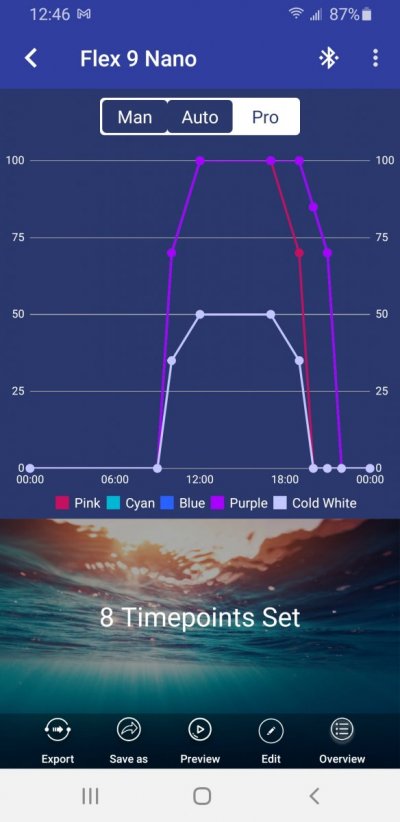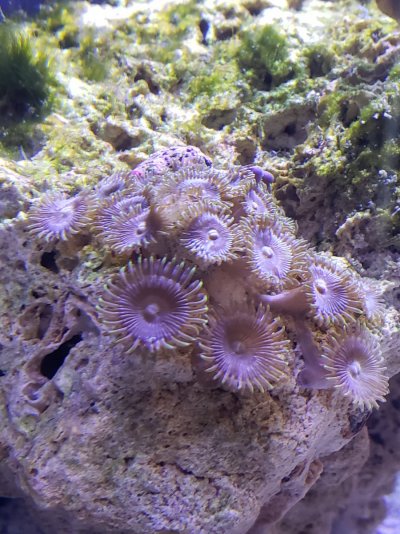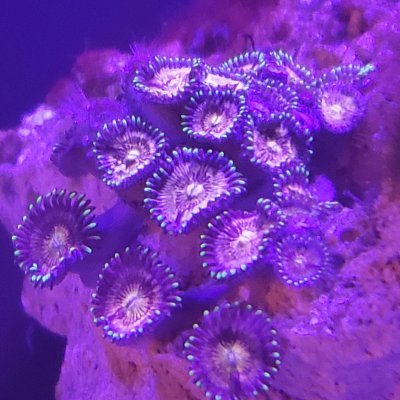- Joined
- May 27, 2020
- Messages
- 86
- Reaction score
- 48
Here are some Seneye PAR/PUR charts for a Fluval Sea Nano 20W light.
It is on a Waterbox 10 gallon.
For these measurements the light was 7 cm (2.75 in) above the water and the Seneye monitor was 15 cm (5.9 in) under the water.
So, the Waterbox 10 gallon is 14 inches tall so the sensor was 7 inches from the bottom and the light 1 inch above the lip.
Sort of the middle of the tank.
Seneye monitor directly under the light with the Seneye held fixed by a fixture.
Pumps were off so the water would rise by 2 cm when circulation is in effect.
Each screen shot has a notation but basically each channel individually at 100%. Cool White was sampled alone at 50%.
And all channels at 100% and what I am running with Pink, Cyan, Purple, Blue at 100% and Cool White at 50%.
It is the black curve that shows the response of the light against the Seneye PUR spectrum of the light used by plants (corals).
Notice some of the channels report 0 PAR even at 100%. Don't know if that is the light or the response of the Seneye.
Won't speculate about what these show beyond that as it would largely be a belief and not data.
Do the corals like the light? Unfortunately I don't speak coral.
When the lights are just 1% blue and 1% purple the corals do fluoresce nicely. I wonder if they do that to attract prey?
-Big Mistake








It is on a Waterbox 10 gallon.
For these measurements the light was 7 cm (2.75 in) above the water and the Seneye monitor was 15 cm (5.9 in) under the water.
So, the Waterbox 10 gallon is 14 inches tall so the sensor was 7 inches from the bottom and the light 1 inch above the lip.
Sort of the middle of the tank.
Seneye monitor directly under the light with the Seneye held fixed by a fixture.
Pumps were off so the water would rise by 2 cm when circulation is in effect.
Each screen shot has a notation but basically each channel individually at 100%. Cool White was sampled alone at 50%.
And all channels at 100% and what I am running with Pink, Cyan, Purple, Blue at 100% and Cool White at 50%.
It is the black curve that shows the response of the light against the Seneye PUR spectrum of the light used by plants (corals).
Notice some of the channels report 0 PAR even at 100%. Don't know if that is the light or the response of the Seneye.
Won't speculate about what these show beyond that as it would largely be a belief and not data.
Do the corals like the light? Unfortunately I don't speak coral.
When the lights are just 1% blue and 1% purple the corals do fluoresce nicely. I wonder if they do that to attract prey?
-Big Mistake



















